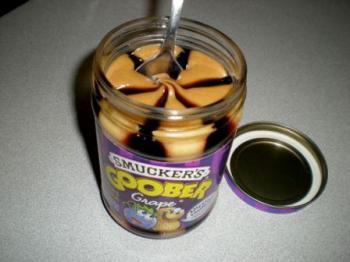Archive
The Evolution of the Peanut Butter and Jelly Sandwich
PB & J: America’s go-to lunch, snack, dinner, whenever sandwich. It never goes out of style. Jerome Monroe Smucker jumped on the PB&J wave at just the right time and has been riding the wave ever since. J. M. Smucker first started Smucker’s in 1897 from the “back of a horse-drawn wagon”. Since it’s humble beginnings, Smucker’s has grown and thrived, to say at the least. Now, Smucker’s company brands include Pillsbury, Jif, and many more. The giant success of Smucker’s proves that obviously Jerome must’ve known something about making sandwich spreads that all of his competitors didn’t. Or, maybe he just knew something about economics that his competitors didn’t. 
The economic concept of complements is one of my favorite because it highlights a very positive aspect of capitalism, making it seem a little less cut-throat. Complements are described as “Two goods that ‘go together,’ either in consumption or production”. This concept outlines the relationship between two goods, and unlike with most products, they actually aren’t in competition. An increase in sales for one product also means an increase in sales for the other. So one company can actually benefit from the success of another company if their goods are complements. Two things that people buy together are considered complements, like hot dogs and their buns, or more importantly: peanut butter and jelly. Smucker’s realized the important economic relationship between peanut butter and jelly and utilized it. For years, jars of peanut butter and jelly were sold separately as compliments so, yes, Smucker’s had success selling jelly, but this wasn’t enough for Jerome. When consumers bought his jelly, they also bought another company’s peanut butter, so it was a win for both companies. But Smucker’s decided that if people were buying their jelly anyway, they should also be buying their peanut butter; they could take over the entire PB&J industry. And they did. In 1968 the world of PB&J changed forever. Smucker’s hit the PB&J market with a curveball, something never done before; both peanut butter and jelly together in one jar. They called it “Goober”. By acknowledging the unique economic relationship between peanut butter and jelly, Smucker’s managed to acquire even more sales and become an extremely competitive player in the PB&J market.
Studying economic terms and the patterns in the market has revealed to me that the success of one company or another is not simply due to luck or having a good product; but is a result of the company’s utilization the laws of economics. As proven with Smucker’s success in the peanut butter and jelly market, knowing the patterns of the market and how to manipulate them can help a company thrive. The idea of complements is particularly interesting to me because it explains how two companies can actually benefit from the success of each other instead of relying on the failure of other companies for their own success. Smucker’s realized the relationship between peanut butter and jelly in the market and took advantage of it by starting to produce Goober: peanut butter and jelly in the same jar. Because Smuckers utilized the laws of economics, they were able to excel as a company and basically acquire a monopoly over the peanut butter and jelly industry.